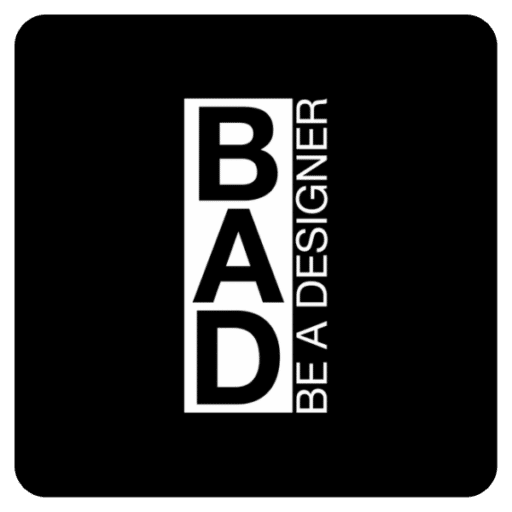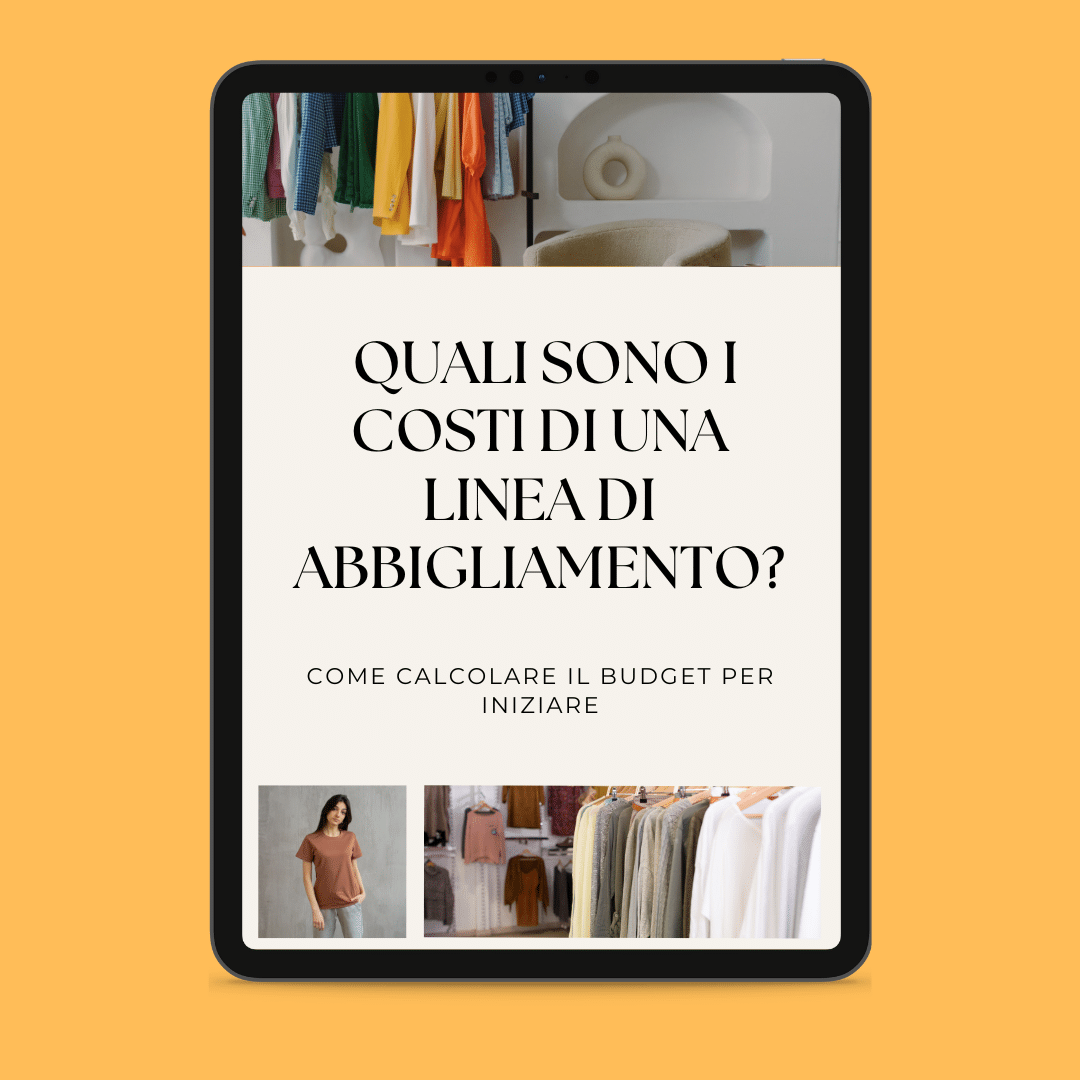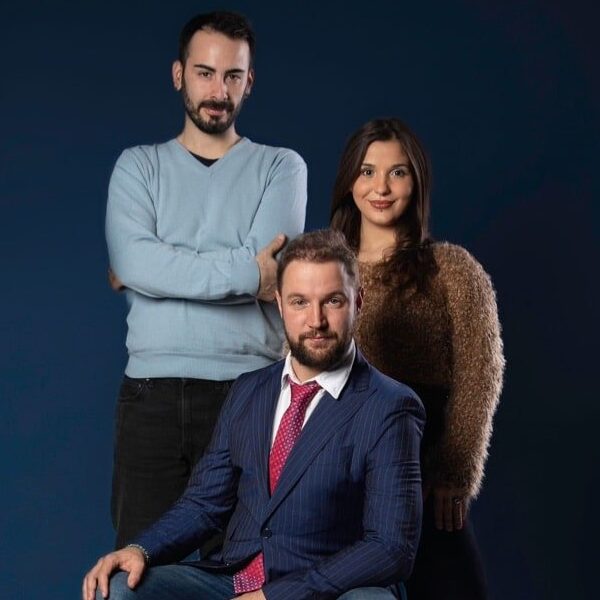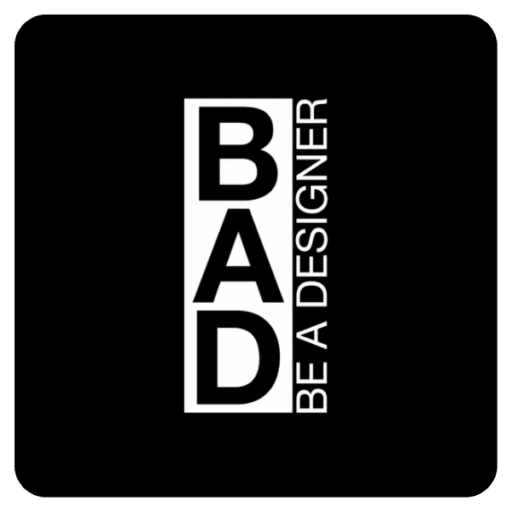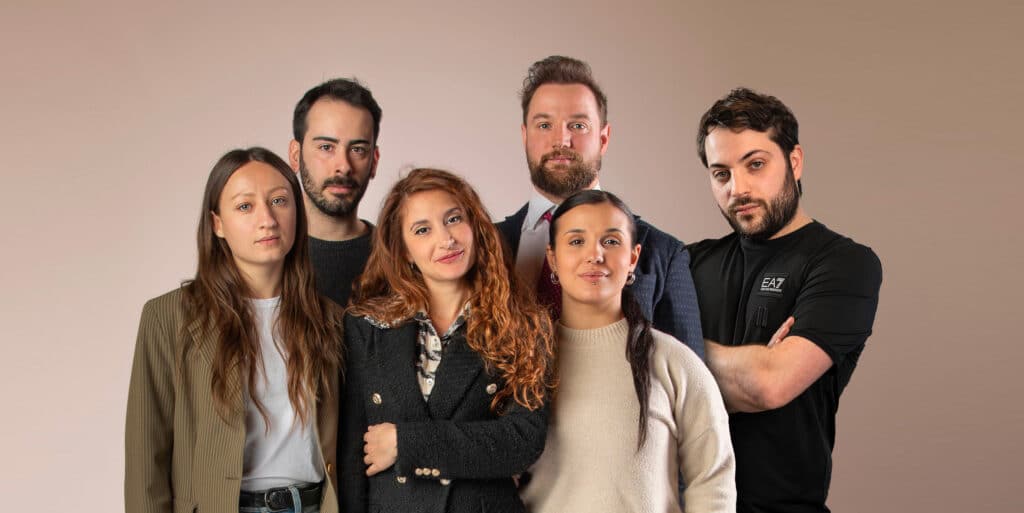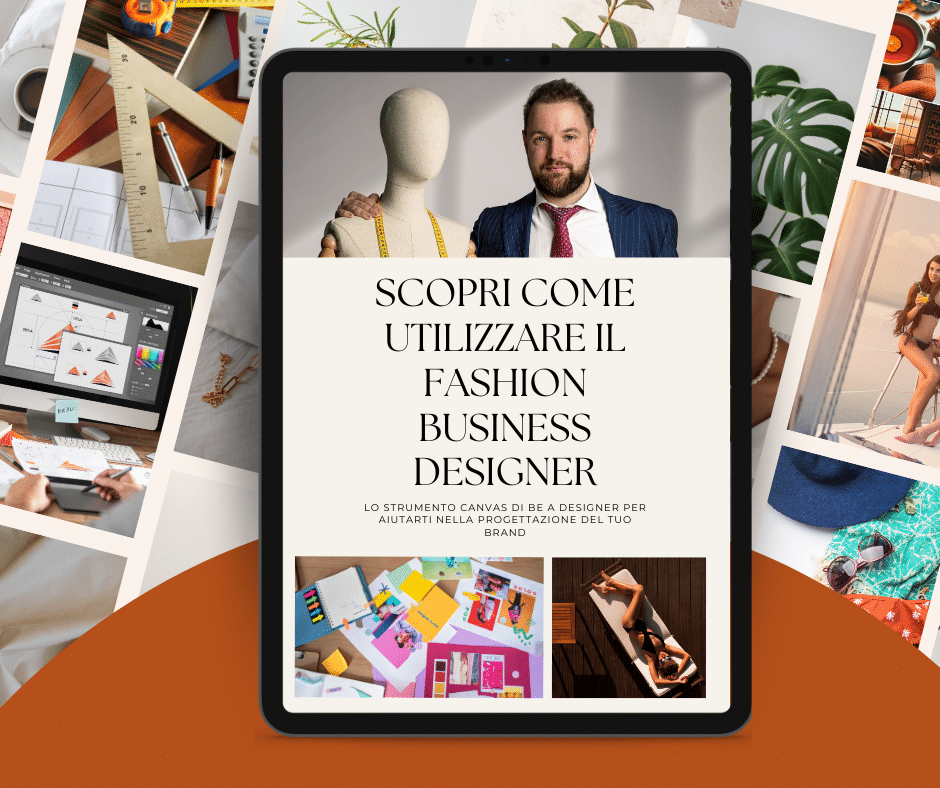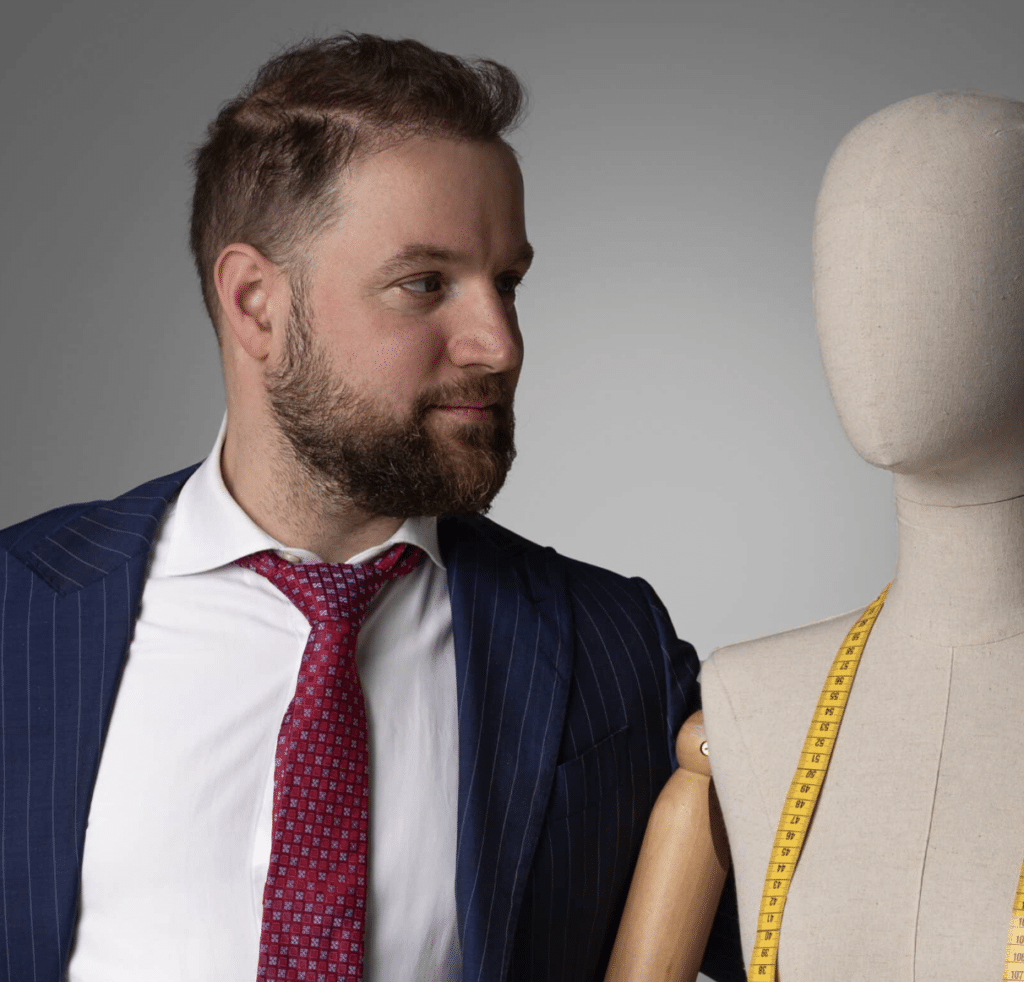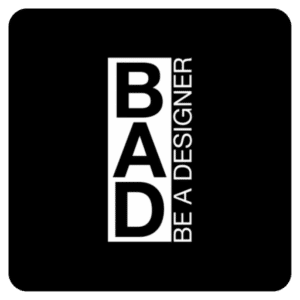Creating a fashion brand is a dream you have carried with you for a long time. That dream that reappears cyclically, that you imagine in detail, that makes your eyes sparkle when you talk about it. But every time you try to realise it, you come up against the same question that blocks everything: how much does it really cost to create a clothing brand? This is the question that can give many an aspiring designer pause.
Maybe you already have your creations worn on the street, maybe posted on social media, or even on the pages of some magazine. It is an ambitious dream that starts with a clear idea and a lot of determination.
And each time that dream ends up back in the drawer, postponed to a 'when I have more money' or 'when the time is right' that may never come.
How much does it cost to create a clothing brand from scratch? This is the question I receive most often from aspiring designers in my daily consultations. And the answer I always give is this: it depends on you, your goals and your strategy.
The inconvenient truth is that there is no single figure: theinitial investment for a clothing line can range from 5,000€ to over 50,000€. But the liberating truth is that you can start with much less than you think if you know where to invest every euro.
The winning strategy is to build a business plan from the outset, albeit gradually, so as not to fall into the typical mistake of needlessly wasting money where it is not needed and not investing it where it is needed.
In this article I will give you a comprehensive answer, exploring each step of the creation process: branding, prototyping, production, marketing, corporate structure and distribution. I will not just provide you with abstract figures, but concrete strategies for smart investing.
I am Corrado Manenti, founder of Be A Designer. Thanks to the method I have developed in over 12 years of experience in the industry, you will discover how to turn your vision into reality, managing your budget, optimising your resources and tackling every aspect of your brand creation with confidence.
A complete overview of costs
The initial investment to create a clothing brand can start from a few thousand euros for very small projects up to several tens of thousands of euros for a more structured launch.
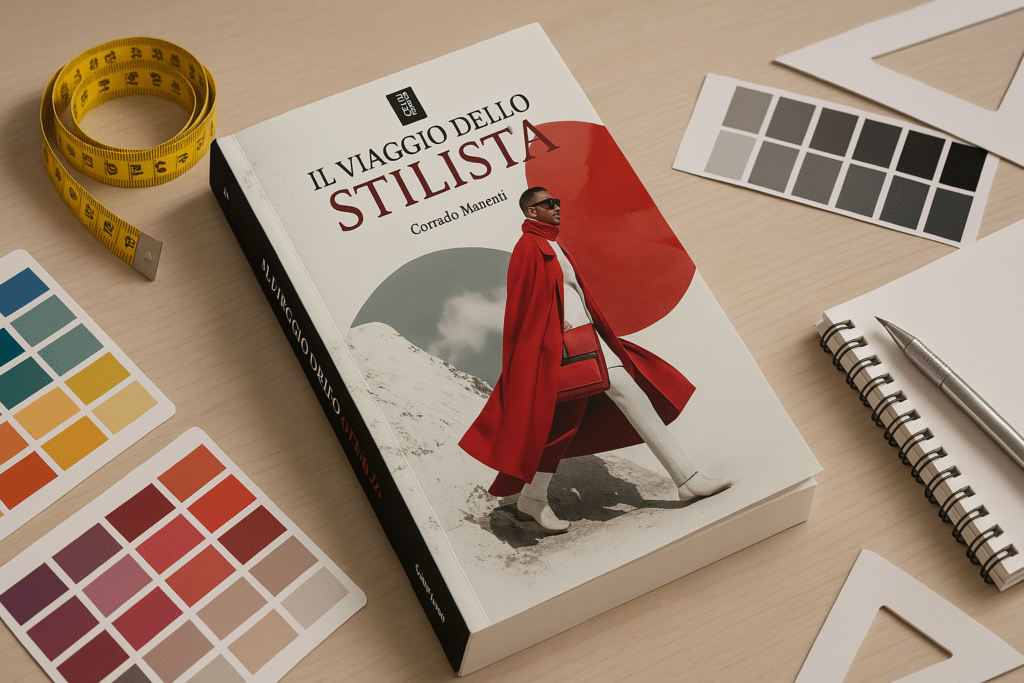
This means carefully plan each stepavoiding an improvised, self-taught approach that often leads to costly mistakes. Rely on instead to expert support can make the difference in optimising costs, enhancing the value of every investment and building a solid foundation for your fashion business.
In short, how much it costs to create a clothing brand depends on many variables, but with the right preparation every euro invested will bring your project closer to success.
Careful budget management can help you:
- Predicting costshaving a clear overview of expenses, both fixed and variable, avoids unpleasant surprises
- Optimising investmentsIdentifying priorities and allocating capital where it generates the most value ensures a secure investment
- Reducing wasteEliminating unnecessary costs increases operational efficiency
Start-up costs: why you better think like an entrepreneur
Producing a clothing line requires a series of initial investments the foundations of your project. Start-up costs include administrative, legal and operational expenses which must be carefully planned to avoid unforeseen events and optimise available resources. With well-structured financial management, it is possible to turn a creative idea into a concrete and sustainable business over time. Let's look at the main elements to consider at this stage.
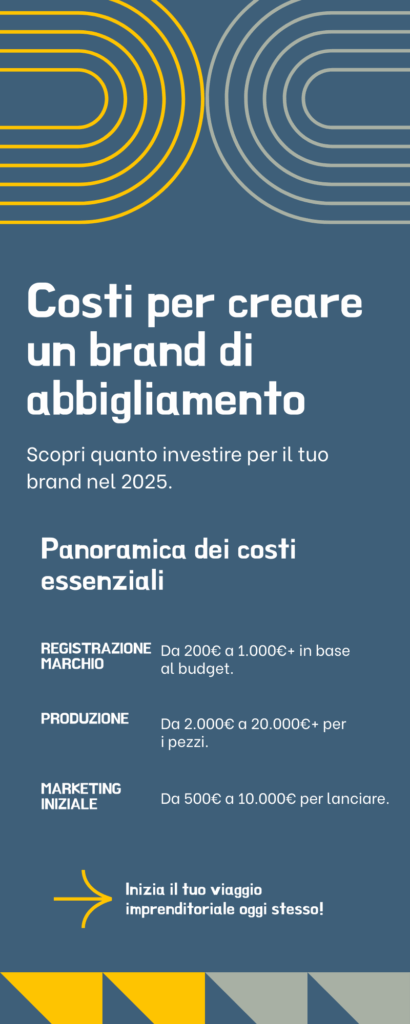
It may sound trivial, but besides financial investment, starting a brand requires patience, perseverance and a strategic vision. As I wrote in the book The designer's journeyit is essential to consider the brand as a business from the very beginning.
This means carefully planning each step, avoiding the improvised, self-taught approach that inevitably leads to costly mistakes. Relying instead on expert support can make all the difference in optimising the start-up costs of a fashion brandvalue every investment and build a solid foundation for your fashion business.
When it comes to the budget for a clothing brand, careful management allows you to:
- Predicting costshaving a clear overview of expenses, both fixed and variable, avoids unpleasant surprises that can hold up the project
- Optimising investmentsidentify strategic priorities and allocate capital where it generates the greatest value and return
- Reducing wasteEliminating unnecessary costs increases operational efficiency and conserves valuable resources
- Planning for growthKnowing where to invest in the following months to scale the business
In short, how much does it cost to create a clothing brand depends on many variables, but with the right preparation every euro invested will bring your project closer to success.
The anatomy of costs: where do we start?
One of the most important aspects of protecting your brand is the trade mark registration. This step not only protects your intellectual property by ensuring that your name and logo are protected from unauthorised use, but also adds professionalism and value to your project.
Expenses for setting up the company
Formalising your business is another crucial step in starting your brand. In Italy, setting up a company entails a number of expenses, including administrative costsi for registration with the Chamber of Commerce, taxes and registration fees e legal and accounting advice.
For many start-ups, the flat-rate scheme is an advantageous choice: this simplified tax system is ideal for start-ups, offering tax benefits and streamlined administrative procedures. Read more about this in our dedicated article: Fashion start-ups: which tax regime to choose.
Production costs
Production is the beating heart of a brand and is also one of the areas where most of the costs of starting a clothing line are concentrated. Understanding and planning every detail related to production allows you to ensure quality, consistency with your brand concept and optimisation of resources. Let's look at the main elements to consider.
How much does it cost to register a clothing trade mark in Italy?
The costs to register a trade mark vary according to the number of goods classes and the geographical coverage required:
- National registration (Italy)200-600€ for a product class
- European (EU) registration850-1,200€ for a class
- International registration1,500-3,000€+ depending on the country
For the clothing sector, typically Class 25 (clothing, footwear, headwear), but you may also need Class 18 (leather goods) or Class 14 (jewellery) if you plan accessories.
Legal advice: an investment that prevents problems
It costs between €500 and €2,000 to hire a legal expert in intellectual property, but it helps you:
- Check the availability of the chosen name
- Navigating complex bureaucratic procedures
- Avoid errors that could invalidate the registration
- Protecting your creative investment effectively
Do not skip this step: I have seen too many brands forced to change their name after months of work because they had not checked availability correctly.
Corporate Setup: Costs to Create the Structure
The formalisation of your business is another essential step to launch your brand professionally. The costs of opening a VAT number for fashion brands in Italy include:
Initial administrative costs:
- Chamber of Commerce registration: 100-200€
- CCIAA annual fee: 50-100€
- Opening a VAT number: free (if you do it yourself) or 200-500€ with an accountant
- Business register: 100-200€
- PEC (Certified Electronic Mail): 10-30€/year
- Digital signature: €30-50
Total basic setup: 300-1,000€ first year
Tax regime for fashion start-ups
For many start-ups, the flat-rate regime is the most advantageous choice:
- Subsidised rate at 5% (first 5 years for under 35) or 15%
- Simplified accounting
- No VAT up to 85,000€ annual turnover
- Reduced accounting costs (300-1,000€/year)
Read more about this in our article: Fashion start-ups: which tax regime to choose.
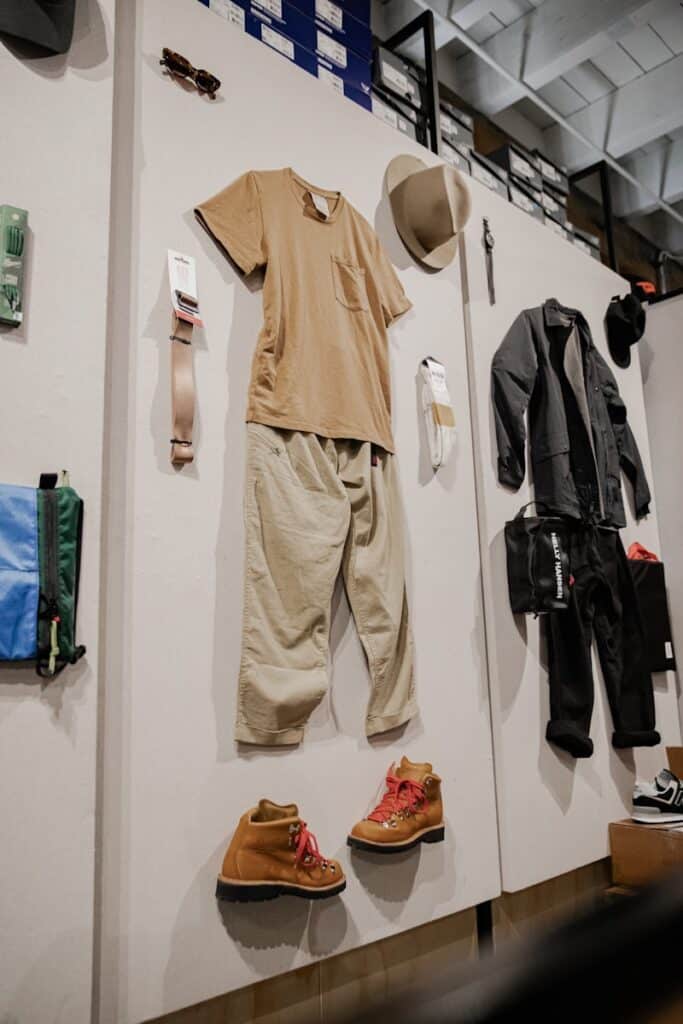
The cost of fabrics can vary significantly, with a range of from a few euros to a few dozen per metre. The quality, type of material and workmanship directly affect the price. For example, fine fabrics such as silk or special wools can be more expensive than synthetics or cotton blends.
Investing in quality materials is essential to differentiate yourself and build a solid reputation in the fashion market.
Contract manufacturing for small quantities
Opting for contract manufacturing can be a strategic and advantageous solution for emerging brands, especially in the early stages of a project.
A smart choice especially for those who want to launch their own clothing line with limited resources: it allows them to maintain a high level of quality in their products, reducing the risks of unsold goods or production errors.
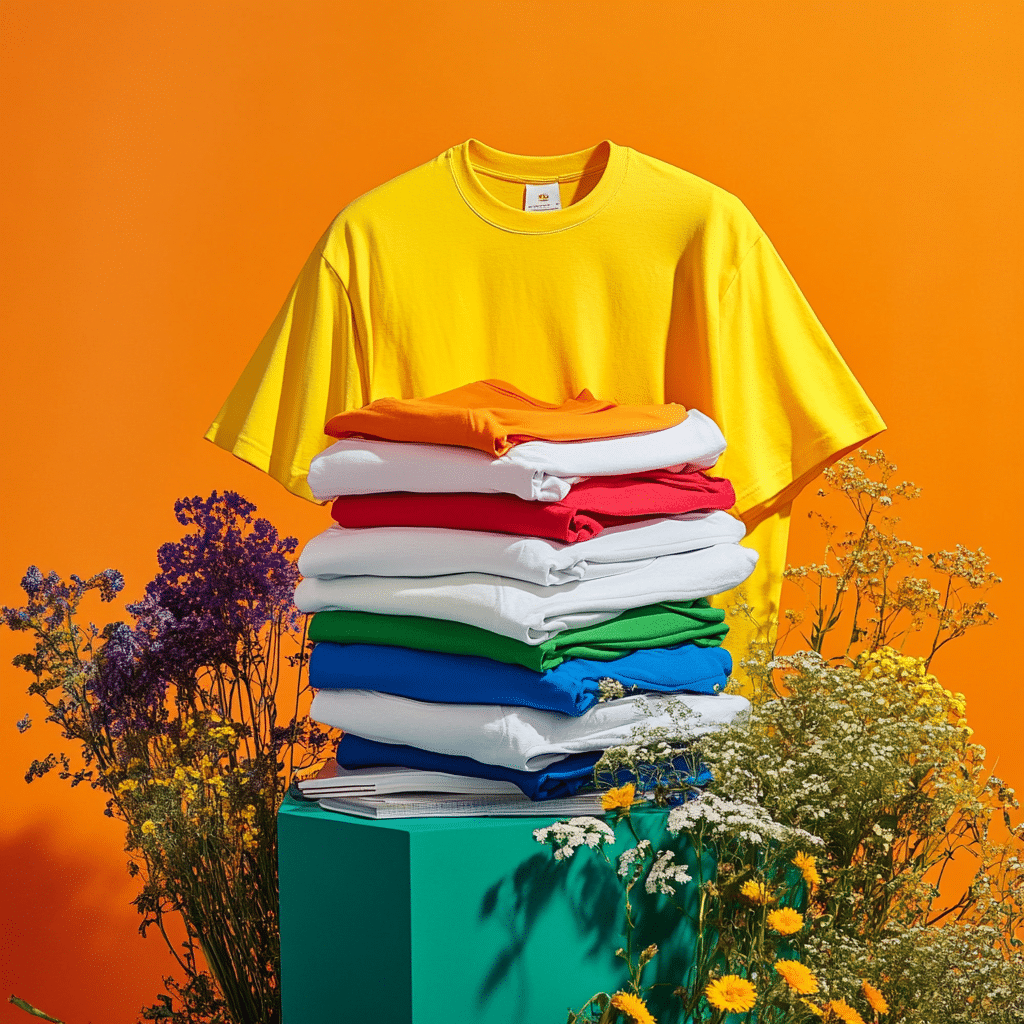
This mode also allows you to start your own line with minimum ordersi, often from 50 or 100 items, reducing the risk of unsold and offering more control over the budget. Thanks to the flexibility of specialised subcontractors, high-quality collections can be produced even in limited batches, adapting quickly to market feedback. It is crucial to choose suppliers with experience in handling small production runs, ensuring precision in details and adherence to schedules.
Want to know more about this solution? Read more in our dedicated article: How to produce contract clothing.
Prototyping and sampling
Prototyping is an essential step in turning ideas into reality. Producing prototypes and samples allows you to testing and refining designscorrecting any fit problems or technical details, before full-scale production. This process is also a key tool for presenting the collection to investors or retailers. Investing in prototyping ensures that each garment is in line with your brand identity and market expectations.
Fixed and variable costs
In addition to start-up and production costs, it is essential to consider the fixed costs of a clothing line and the variable costs your brand will face over time. These costs include everything you need to keep your business operational and support its growth. Careful planning will help you manage your budget and ensure long-term sustainability.
Rent and utilities
One of the most important aspects to consider are the expenditure on physical space. If you plan to open a showroom, office or creative workshop, rent can become a major item in your monthly budget. Depending on location and size, costs can vary considerably. For example, a central city location will cost more than an office in the suburbs, but may offer you more visibility.
To these expenses are added those for the utilitiessuch as electricity, water and internet, which can further affect your budget.
Staff and collaborators
Behind every successful line there is a team working to realise the founder's vision. When it comes to personnel, it is important to consider both the expenses for employees and for any external collaborators. If you need key figures, such as a production manager or a social media manager, you will need to budget for salaries commensurate with the required skill level. These costs can be a significant commitment, but the right team can make all the difference in the success of your brand.
If you prefer to keep a leaner structure, freelance collaborations can be an ideal solution. External professionals can help you in specific areas, such as graphic design or campaign management, offering flexibility and lower costs than hiring directly. It is important, however, to choose collaborators who share your vision and are able to translate it into concrete results.
Marketing and advertising costs
Marketing is the bridge that connects your brand to your audience, and it is one of the areas in which you should invest to build visibility and credibility. Even with limited budgets, investing in targeted advertising campaigns can generate excellent results, especially in the early stages.
Consider that marketing and advertising costs vary according to your objectives and chosen strategiesbut to get started even small investments can make a difference.
Investing in marketing does not simply mean spending money, but building astrong, recognisable image that helps your brand stand out in the competitive fashion industry.
Stock and inventory costs
Managing stock and inventory is one of the main challenges for a clothing brand, especially when starting a line from scratch. Efficient stock management not only allows you to reduce waste, but can also free up economic resources to be allocated to other strategic areas of your project. Let's see together how best to tackle these costs.
Stock Management
Well-managed stock is essential to ensure the operational efficiency of your brand. Having too much stock can lead to problems such as unsold stock, high inventory costs and wastage, while insufficient stock risks compromising sales and the customer experience. Careful management of stock costs allows you to maintain flexibility, adapt quickly to market changes and optimise resources. Planning ahead and regularly monitoring stock are key steps to keep this critical area under control.
Solutions to reduce inventory costs
Reducing warehousing costs is possible thanks to innovative strategies that reduce expenses without compromising the quality of service offered to customers. The dropshippingfor example, can be a particularly useful option for emerging brands: it allows products to be sold without physically holding them in stock, as orders are sent directly from the supplier to the end customer. Alternatively, the production on request completely eliminates the need to maintain stocks: garments are only produced after the customer has placed the order, thus reducing the risk of unsold items and optimising costs.
Trade mark registration and protection costs
As we have seen before, registering and protecting your brand is an essential step in consolidating your corporate identity and ensuring success over time. A registered trade mark not only protects you from misuse of your name and logo, but also increases the credibility of your project in the eyes of customers and investors.
This phase requires an initial investment, but is essential to build a solid base and defend your business from unauthorised use by third parties.
Trademark Registration Procedures and Costs
Trade mark registration is a technical procedure involving the submission of specific documents to the competent bodies, such as theItalian Patent and Trademark Office or international bodies, depending on the geographical scope of protection desired. The process begins with checking the availability of the chosen name or logo to avoid conflicts with already existing trade marks.
Costs for trade mark registration may vary depending on the number of product classes you choose and the geographical area you want to cover. Generally, in Italy, range between 200 and 1,000 euro.
Investing in trade mark registration means securing your work and consolidating your brand image over time. This process requires precision and attention to detail, but it is an essential building block for the success of your project.
Legal advice
Seeking legal advice is highly recommended to tackle the trade mark registration process with confidence. An experienced IP lawyer can guide you through the process, ensuring that your trade mark meets all legal requirements and protecting you from possible challenges.
The cost of legal advice can vary widely depending on the complexity of your business and the coverage required. Although it represents a significant investment, the support of a professional can prevent costly mistakes or future legal disputes, offering comprehensive protection to your brand.
Funding and incentives
Starting a clothing line requires not only creativity and dedication, but also financial resources to cover start-up costs and keep the business running over time. Fortunately, there are numerous opportunities to funding and facilities for start-upsespecially in the fashion industry. Carefully planning how to access these resources will help you build a sustainable and well-structured business.
Financing options available
Financing options for start-ups are many and vary depending on the needs and stage of the project. Banking institutions, for instance, offer specific loans designed for new entrepreneurs, often with subsidised rates and flexible conditions. These instruments can be ideal for covering initial costs, such as the purchase of materials or legal fees.
Another interesting option is crowdfunding, which allows you to raise funds through online platforms. This approach not only allows you to obtain financial resources, but also creates a direct link with your future customers, turning them into supporters of your brand.
Finally, do not underestimate the possibility of attracting private investors or venture capitalists. To obtain their support, it is essential to present a clear and convincing business plan that demonstrates the sustainability and potential of your project.
Government and regional incentives
In Italy, the government and many regions offer incentives and facilities to support start-ups, especially in innovative and creative sectors such as fashion. These programmes can include non-repayable grants, interest-free loans and tax breaks, which are a great advantage for start-ups.
For example, some Italian regions provide funds dedicated to young entrepreneurs or women's businesses. In addition, at national level, the 'Resto al Sud' programme and other specific calls for tenders for the fashion sector offer significant resources for those wishing to start a business project in this field.
Read more in our dedicated article: Fashion in Italy: incentives for doing business.
Cost management with the BAD method
As we have seen, effective financial management is crucial to ensure the success of your clothing line. That is why I have put my experience in the industry to work and developed the BAD method (Be A Designer), an indispensable ally offering tools and strategies to plan and optimise resources, ensuring sustainable growth and a solid market presence.
Tools for budgeting and planning
The BAD method provides a structured approach to the financial management of your brand. Through customised consultations we guide you in the creation of a detailed budget, identifying the key areas on which to focus investments. This process includes the analysis of production, marketing and operational costs, allowing you to allocate resources efficiently. In addition, the BAD method supports realistic financial target setting and long-term planning, ensuring that every decision is aligned with the overall brand vision.
Tips for optimising resources
To optimise your brand's resources and get the most value from your investments, it is important to adopt a strategic approach that fits your real needs. With the BAD method, the focus is on the create a balance between operational efficiency and product quality. Depending on your needs, we can evaluate together some of the solutions we have highlighted above, such as:
- Small-scale productionWorking with contract manufacturers for small quantities allows you to test the market without committing significant resources
- Use of shared spacesIn the beginning, opting for coworking or shared workshops can significantly reduce fixed costs related to rent and utilities.
- Process automationImplementing inventory and sales management software helps monitor operations in real time, optimising logistics and reducing errors.
However, the BAD method goes beyond generic solutions, offering a customised approach for each project. Each brand has unique needs, and the method evaluates on a case-by-case basis the best strategies to maximise efficiency, reduce waste and focus on the activities that generate the most value.
Practical advice
To avoid common obstacles on the path to starting and running your clothing line, it is essential to be aware of the most frequent mistakes and to know how to prevent them.
Common mistakes to avoid
- Underestimating the importance of marketingMany emerging designers neglect marketing, but it is crucial to promote your product. Focus on effective strategies to reach your target audience.
- Failure to adequately protect the brandMake sure you register your trade mark correctly and have clear contracts with suppliers and collaborators to avoid future legal problems.
- Ignoring feedbackIt listens to criticism and input from co-workers, professionals and customers, using them as a basis for continuous improvement.
Now that you know what it costs to start a clothing line and where to start, what are you waiting for? Are you ready to start this adventure? Contact the Be A Designer team for a personalised consultation and start turning your passion into a successful business.
